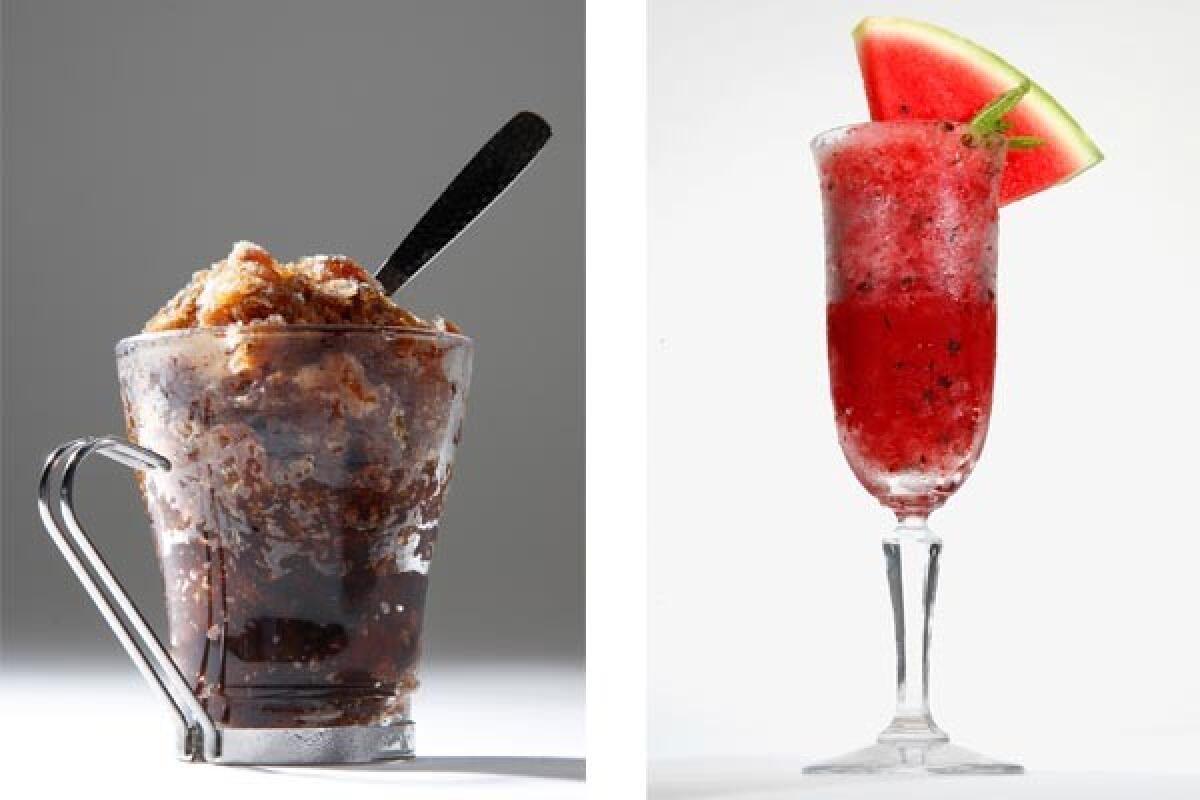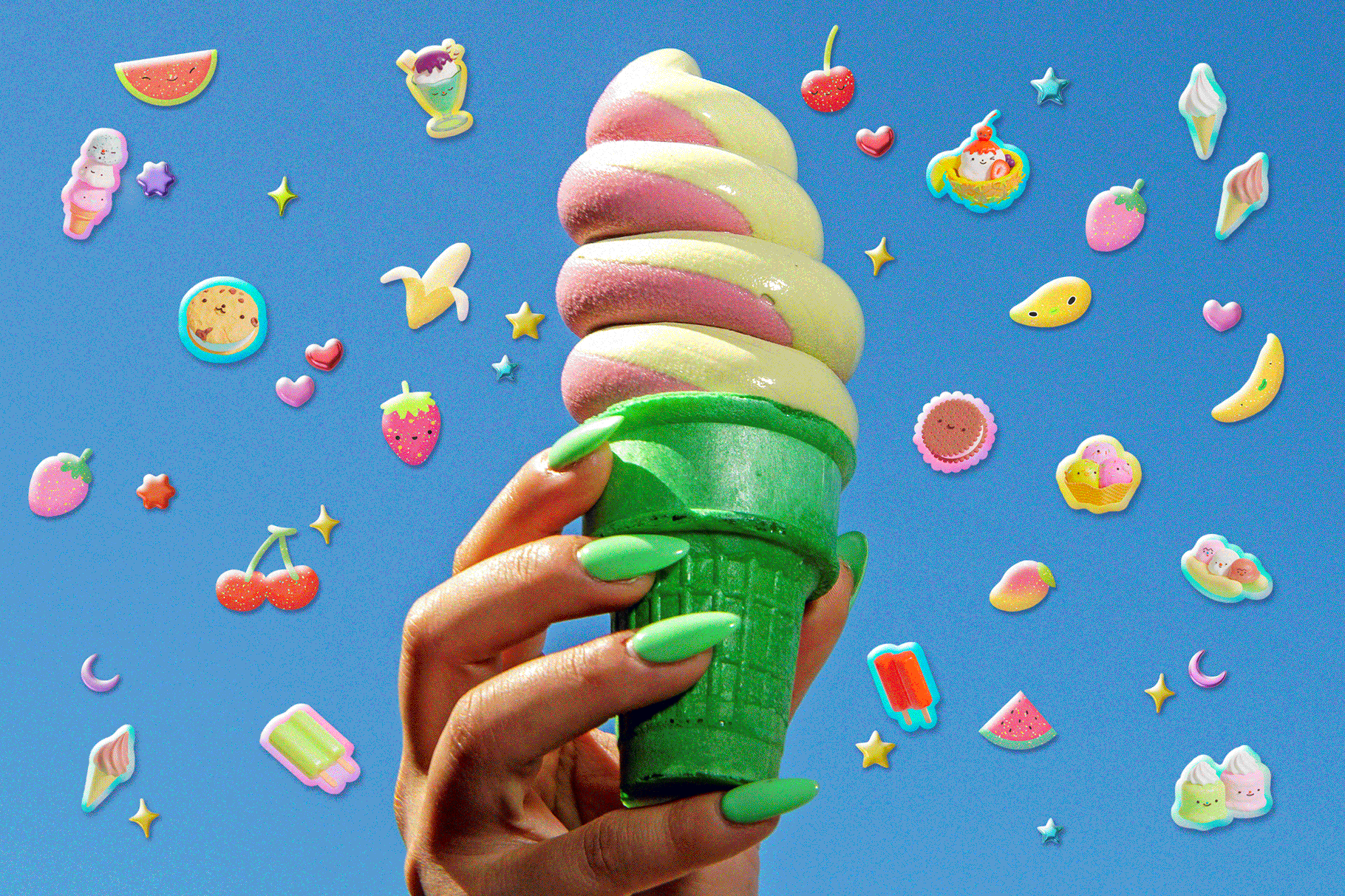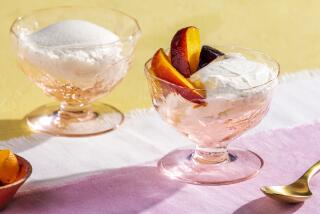Granita is a laid-back, chill treat

This has been the most temperate summer I can remember. But while we sit outside luxuriating in these cool evenings, I think we all know that our real summer is lurking right around the corner. September and October can be the hottest months of the year in Southern California. The kind of blistering, soul-deadening heat in which you can work up a sweat just sitting around watching television.
When it’s that hot, the only thing you can think about eating is a bowl of ice cream. But who has the energy to go find all the equipment buried in the pantry? Plus, you forgot to put the ice cream maker bowl in the freezer. Plus, are you really going to stand over the stove cooking a custard base? Really?
Cool down. Do you have a metal baking pan? How about a fork? That’s all the equipment you need to make granita, the chillest treat you’ll ever find.
Granita is a coarse Italian ice, intentionally made to have large crystals and a slightly slushy texture. You can think of it either as sorbet’s country cousin or as an extremely dignified snow cone.
Here’s how you make it: Purée fruit or use another liquid. Stir in either sugar or simple syrup. Pour the mixture into a metal baking pan and stick it in the freezer. After an hour, give it a good stir with a fork. Then stir it again every 30 to 45 minutes thereafter. When the slushy ice crystals have frozen enough that they stick together without any visible liquid remaining, the granita is done.
That’s all there is to it.
As you can tell, the method is almost infinitely flexible. You can make granitas with flavors as diverse as peaches and coffee. The basic technique is exactly the same, with a few wrinkles. For example, you’ll probably want to strain a fruit like peaches (or maybe not — the extra pulp will just make the granita creamier).
You’ll almost certainly want to add more sugar to coffee (since it’s not nearly as naturally sweet as peaches). You can sweeten granitas either with sugar or with a simple syrup (which is especially handy for making granitas from firm ingredients). Simple syrup is made by boiling water and sugar — equal amounts is standard.
Generally, you’ll want between 1/2 and 11/4 cups of sugar for every 4 cups of liquid. Because cold mutes flavor, you’ll want the raw mix to be slightly sweeter than you might think. Not overwhelmingly sweet, of course — and remember that sugar lowers the freezing point of liquid, so too much will mean that your granita never gets past the slushy stage.
Once you master that, there’s plenty of room to play. Even better, making granita is remarkably fail-safe. Because you’re not worried about getting the absolutely perfect final texture (you want it to be icy and slushy), if you don’t get the recipe exactly right the first time the result will still be presentable.
I made two granitas recently. The simplest is coffee. Brew a strong pot, add a sugar syrup flavored with cinnamon (sweeter than normal because coffee is so bitter) and freeze. It’s good just as it is, but a little whipped cream on top would not be out of place.
The other is based on watermelon, which, when you think about it, is almost a granita by itself. Purée cubed fruit in the food processor and strain it into a bowl to remove the pulp, stir in sugar, lime juice and chopped mint. Freeze.
These ices are best served on the day they are made. They tend to freeze solid when left overnight. If you let them go into a single block of ice, it can be rescued by chopping it into smaller bits and then coarsely puréeing it in the food processor, but the texture will be lighter and finer, and you’ll lose some of the power of the flavor.
On the other hand, it’ll still be plenty cold, and sometimes that’s good enough.
More to Read
Eat your way across L.A.
Get our weekly Tasting Notes newsletter for reviews, news and more.
You may occasionally receive promotional content from the Los Angeles Times.











